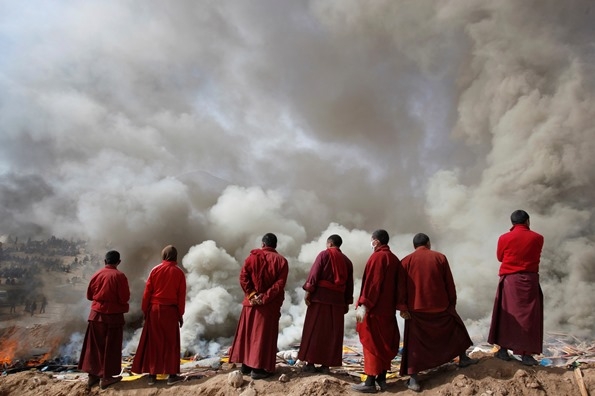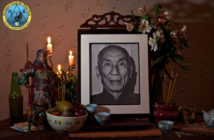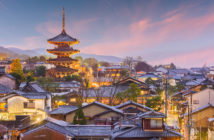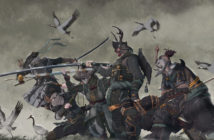The Tibetan sky burial appears to have evolved from ancient practices of defleshing corpses as discovered in archeological finds in the region. These practices most likely came out of practical considerations, but they could also be related to more ceremonial practices similar to the suspected sky burial evidence found at Göbekli Tepe (11,500 years before present) and Stonehenge (4,500 years BP). Most of Tibet is above the tree line, and the scarcity of timber makes cremation economically unfeasible. Additionally, subsurface interment is difficult since the active layer is not more than a few centimetres deep, with solid rock or permafrost beneath the surface.
“Separation of the body and soul”
The Tibetan Sky Burial
by Kerrie Henderson
This morning, in the hostel in Kangding a Chinese guy asked me whether I’d been to Sida or not. For a lot of young Chinese it seems to be this years ‘In’ destination… “and did you see the ‘tianzang’ (i guess he didn’t know the right words in English…) ?… I really want to see…” I did, but at Sida I wasn’t that comfortable with it.
I’ve seen one before, 2-3 years ago whilst biking through Gansu province. A body was carried up a hill and a gathering of Tibetan relatives and lamas stood or sat watching. There were a few foreigners there too, but we all knew that our cameras were to be kept inside our bags. We stood watching for around an hour or so… in awe of the birds, their size, their grace and the way they sat on the hill silently, waiting for their turn to pick at the remains….
Sida
In Sida its very different. Around 12.00 a handful of drivers stood outside the hilltop hotel yell ‘去天葬吗 ?and Chinese tourists haggle over prices or ask around to find others to fill up their cars. Around 12.30 most of the cars have made their way down to the bottom of the monastery complex and are beeping at each other as they negotiate their way through the muddy bumpy truckstop village at the bottom. The beeping and racing continues as the cars go down the road, turn and go up a smaller narrower mountain road. Its raining but the car park is already half full and its hard to see the end of the line of cars still making their way up the mountain.
There are already around a hundred or so tourists, all Chinese stood behind a rope when I arrive. A couple of lamas and nuns (maybe real… maybe tour guides dressed up… I’m really not sure now…) were telling people to stay behind the line and not to take photos of the body or of the people surrounding it. I pointed my camera at the birds, as awesome as I remembered sat waiting patiently on the top of the hillside, looking for the right moment to make their way further down.
The Ceremony
I have no idea when the ceremony started. There was a nun singing ‘o-mani…’ and lots of Chinese people talking. I guess the ceremony wasn’t quite what the Chinese were expecting as most had left within 1/2 an hour or so. I stayed watching the crowd thin, and staring at the line of vultures sat on the hill above me. I couldn’t help wondering why the the vultures were more interested in watching their friends than eating lunch, and then realised I was doing the same thing, not really watching the ceremony and the proceedings but the behaviour of the crowd, and the way the Chinese people reacted to what they were watching.
There were a lot of ‘i’m very cold’ and ‘I’m hungry’ ‘s… There were people taking pictures of the birds squabbling over the body (the very thing the monks told them not too…. and, yeah I know I shouldn’t have taken 2 of the pics. here but my iPad doesnt have the same super sized zoom lenses that many of the Chinese photographers cameras do…)
A few Tibetan people were gathered around the monument at the bottom, near the pit where the body and vultures were and a few more groups were scattered around the hillside sat quietly. I wondered what they thought about what they were seeing… their relatives death being turned into a macabre tourist attraction, and how westerners would react if a group of Chinese tourists turned up at a church burial wanting to watch when and how the coffin was lowered into the ground and to take pictures of it. 
Reflecting on Death
I can’t help thinking that death and the ceremonies that surround it are a personal thing, for the families and friends of the person that died. In western culture funerals are usually sad events, but in other cultures (and sometimes in the west, but not often), they are happier occasions, a celebration of the deceased’s life… and that being invited to watch the ceremonies associated with it is a privilege, not something that people should expect to see when they go to a Tibetan tourist place.
I wonder whether the monastery is deliberately encouraging the tourist crowds. The sky burial site has a large white monument and construction is underway to make it and the car park alongside it bigger. In Gansu, the ceremony and the place where it took place was simple, the surroundings natural. There was a weird beauty to the proceedings. In Sida there was nothing ‘natural’ about it. 10 minutes or so later when a young boy took my ipad off me to look at my photos I realised that the tour guide/nun had stopped singing and had disappeared.
A few minutes later I saw her lead a group of people across the grass, one of the places where were told not to go. The people in her group were pointing their cameras at the vultures and the body below and no one was stopping them. By this time the crowd had thinned out. Horns were beeping as the cars were pushing past each other to make their way out of the car park.
The vultures were still picking away or watching and waiting. I stayed a while longer, watching the birds, the snake of cars slowly making its way down the hillside and the small groups of Tibetans sitting in the distance. I couldn’t help wondering who were the vultures. I don’t think the monastery intended to promote this type of tourism, but now that seeing a 49 day old corpse being pulled apart by vultures is one of the latest ‘in’ things for Chinese tourists heading to Sida to see I don’t think it will be easy for them to control.
But back to the story… I asked the guy why he wanted to go and see one. ‘because… because everybody talks about it. It sounds good. I really want to see. People say Sida is the best place to see it.’ ‘Maybe you should see it.’ I told him ‘It might make you think…’ but, judging by the group of tourists I watched 4 days ago… I doubt it.








